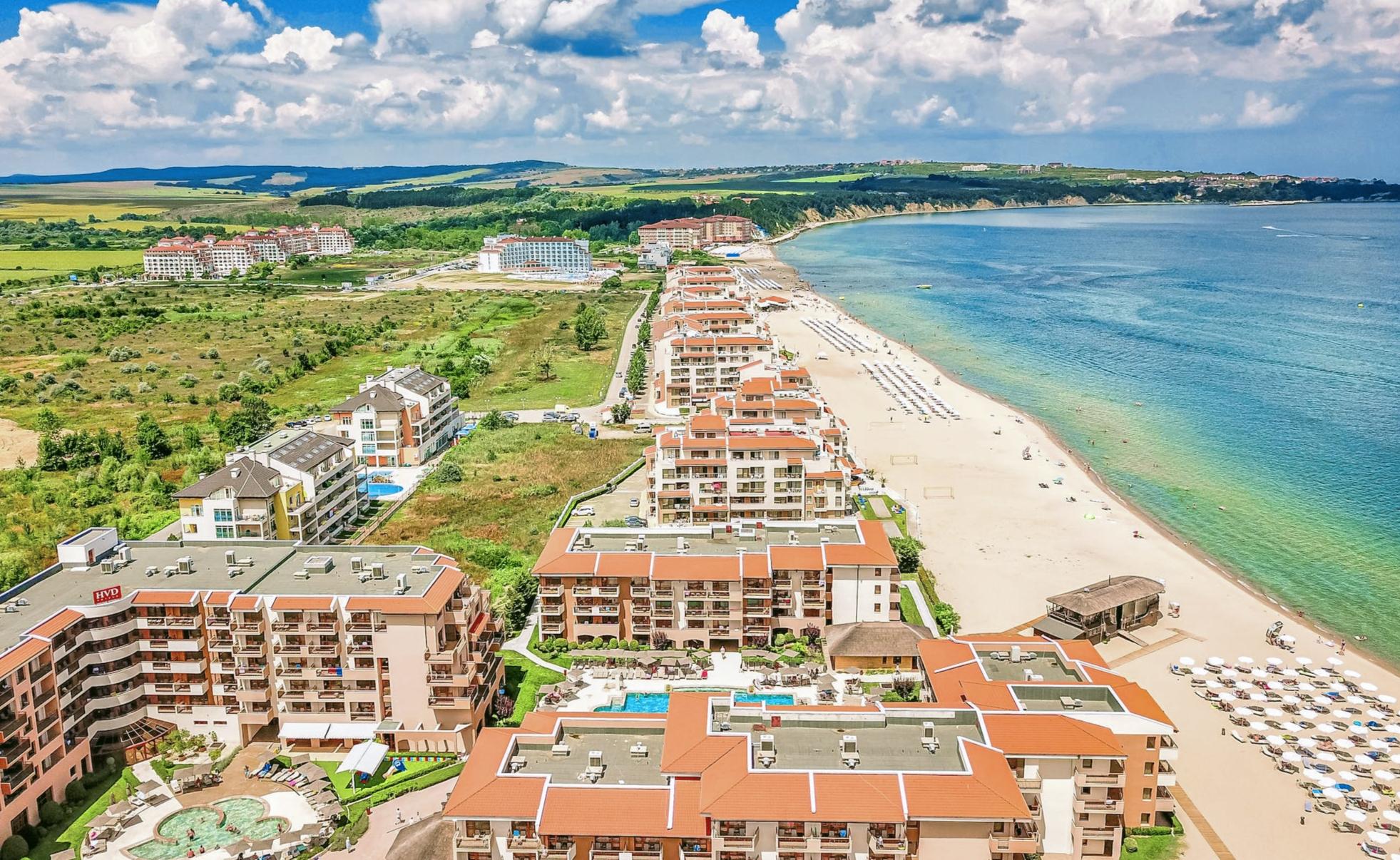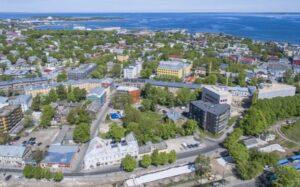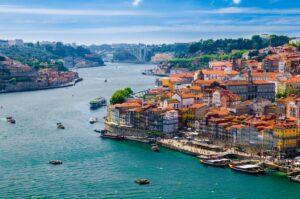Explore The Best Places To Visit in Bulgaria & Natural Places in Bulgaria
- Bulgaria Tourism
- Best places to visit in Bulgaria
- Waterfall “Goritsa”
- Vihren (places in Bulgaria)
- Nirwana Beach (Tourist attractions in Bulgaria)
- The stone forest (places in Bulgaria)
- Pirin national park (Landmarks of Bulgaria)
- Krushuna Waterfalls
- Prohodna Cave (places in Bulgaria)
- The Wonder Bridge (Tourist attractions in Bulgaria)
- The stone mushrooms (places in Bulgaria)
- The Melnik Earth Pyramids
- The Belogradchik Rocks
- Srebarna nature reserve (places in Bulgaria)
- Devil’s Throat cave
- Tsarevets fortress (places in Bulgaria)
- The sinuous curves of the Arda River
- Sozopol (places in Bulgaria)
- Beglik Tash (Landmarks of Bulgaria)
Bulgaria Tourism
Bulgaria is a country located in the Balkan Peninsula of southeastern Europe. It is bordered by Romania to the north, Serbia and North Macedonia to the west, Greece and Turkey to the south, and the Black Sea to the east places in Bulgaria. Bulgaria has a rich history that dates back thousands of years and is home to many cultural sites and attractions.
The country has also become an increasingly popular tourist destination due to its beautiful scenery, vibrant culture, delicious cuisine, and friendly people. Whether you are looking for a relaxing beach holiday or an exciting adventure in nature, Bulgaria has something for everyone.
Here are the best natural places in Bulgaria you don’t want to miss on your next visit.
Best places to visit in Bulgaria
Waterfall “Goritsa”
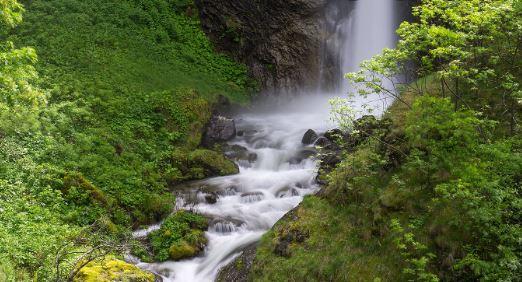
In the Goritsa is located close to the spa resort of Sapareva Banya and the settlement of Ovchartsi in the northern foothills of Rila. At 900 meters above sea level, it is the lowest waterfall in the Rila in terms of elevation. The Goritsa River, a tributary of the Dzherman in the Struma basin, runs parallel to the waterfall’s path. It receives water from the Kriva Sospa, Kamenna Mandra, and Kabul summits’ slopes. After Skakavitsa, Goritsa is the highest waterfall in the Rila.
A trail leading from the higher borders of Ovchartsi in the direction of Sokolov Izgledl.
In the settlement at an elevation of 1200 m leads to the plunge waterfall known as Goritsa. Six other lesser waterfalls ranging from 5 to 15 meters are located further upstream of the river in addition to the main waterfall. The water flow to the waterfall is maintained throughout the year regardless of the weather.
Vihren (places in Bulgaria)
Vihren is the highest peak of Bulgaria’s Pirin Mountains. The highest mountain in Bulgaria is Mussala at 2925 meters in the Rila massif. The highest peak in the Balkans is Vihren at 2914 meters (2nd highest is Mitikas at 2917 m in Olympus, Greece). Vihren is a dominant feature in the vast Pirin massif, with an attractive form and imposing outlook.
The Vihren summit is located in the Pirin massif’s northwest region. Vihren creates an outstanding alpine landscape of Mt. Pirin with “brother” Kutelo (2908 m), the second-highest peak of the Pirin and the fifth-highest in the Balkans.
The Vihren massif is stunning from every angle. The north face of Vihren is the most remarkable and potent, with its breathtakingly high wall. In contrast, the south and west facades are situated above the saddle between Vihren and Kutelo and have lovely Vlahinski Ezera (lakes) views.
Nirwana Beach (Tourist attractions in Bulgaria)
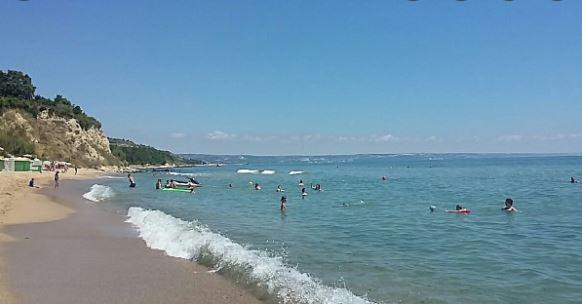
Paradise Beach On the banks of the Aghanashini river in Kumta, there is a lesser-known paradise called Gokarna, commonly referred to as Kagal beach. It is a lonely beach with broad stretches of sand that meet the Arabian Sea’s bluish-green water.
On Nirvana Beach, observe the sparkling phytoplanktons. It’s one beautiful tourist attractions in Bulgaria.
Take a romantic stroll on Nirvana Beach at night, relax by the bonfire, and dunk your toes in the mesmerizing sand shimmering with phytoplankton. South of Gokarna, in the Baad region, it is close by. Direct ferry travel to Nirvana Beach is an option, as is the more time-consuming road travel. Although there are a few hotels beside the beach, there aren’t many people.
The stone forest (places in Bulgaria)
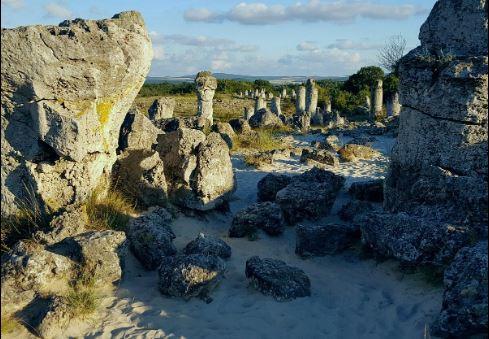
The Stone Forest near Varna, Bulgaria’s Sea Capital, is a geographical phenomenon that has sparked a worldwide. . The most widely accepted theory holds that the formations formed on the seafloor 50 million years ago when the sea submerged the land. Then, as the water receded, the soft rock gave way to form these clusters of accidental pillars.
When wandering around the white sand desert with its enormous limestone pillars rising from the ground, the 3km wide area has an unnatural stillness.
Pirin national park (Landmarks of Bulgaria)
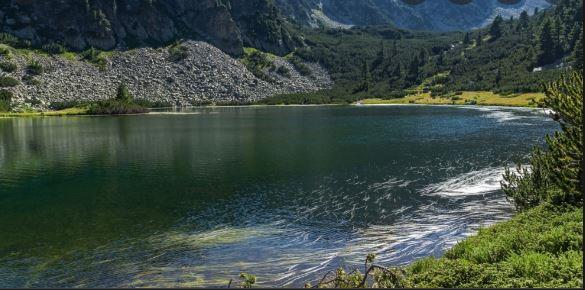
The Pirin National Park, with over 100 peaks rising above 2000m, is known as the Land of Giants. It is Bulgaria’s oldest and is part of UNESCO’s Man and Biosphere Program. It is shaped by more than 170 glacial lake cirques, deep valleys, pyramidal rocks, dense fir, and pine forests, and it is snow-capped for most of the year.
The protected area is located within the larger Pirin Mountains, whose foothills are rich in hot mineral springs, vineyards, and rivers. This natural wonder of Bulgaria also includes the awe-inspiring Bayuvi Doupki-Dzhindzhiritsa Biosphere Reserve and the Yulen Reserve.
The forested mountain landscape, which covers more than 60% of the park and has Bulgaria’s oldest tree standing at 1350 years old. It was named by the Slavs and their god, Perun. So it’s no surprise that it’s well-known for its plant and wildlife diversity. It thrives between the deep corridors of scattered caves and waterfalls that flow into one of the many lakes.
Krushuna Waterfalls
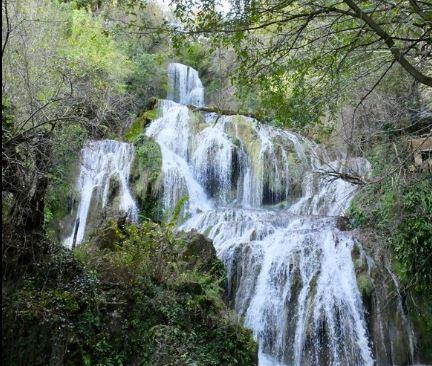
The Krushuna Waterfalls, also known as Maarta Waterfalls after its local river, is one of the country’s most extensive cascades, dropping 20 meters. A narrow eco-path leads you up steps, across bridges, and past small natural water pools among the mossy limestone rocks. You can even swim in a natural mineral pool with a water temperature of 58 degrees Celsius. The water’s blue-green color is said to have healing properties due to the limestone.
Continue on the path to the waterfall’s spring inside a cave and enjoy nature at its best in Bulgaria: the woodland setting and lush vegetation that frames the area.
There are ancient caves within the surrounding rocks where monks carved their dwellings in the 13th and 14th centuries, and there is even a tiny church carved into one of the rocks.
Prohodna Cave (places in Bulgaria)
Prohodna Cave, famous for two gaping, eerily symmetrical holes in the cave’s ceiling, is located in one of Bulgaria’s most prominent karst regions in the country’s north.
The pools of light from the eyes stare down at you as you enter the middle chamber of a 262 m-long cave, illuminating you from above, and are frequently referred to as the Eyes of God or The Eyes of the Devil. Water is commonly seen running down the cave walls, giving the impression that the eyes are crying.
The Wonder Bridge (Tourist attractions in Bulgaria)
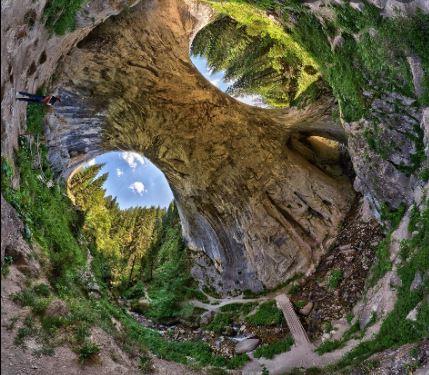
The Wonder Bridges are located in the Rhodope Mountains of Southern Bulgaria. It is formed by the erosive of the Erkyupryia River and situated on the river’s karst valley. The marble clefts were transformed into a deep-water cave, the ceiling of which eroded and collapsed, most likely due to an earthquake. The remaining bridges are 100 and 50 meters high and 40 and 60 meters wide. A third, much smaller one is a submerged cave. You can walk under bridges, and an ancient tradition has it that everyone who walks under the first bridge should write their names on the wall with coal.
The stone mushrooms (places in Bulgaria)
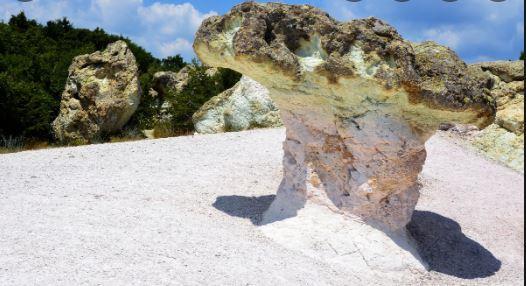
The Stone Mushrooms are located between Haskovo and Kardzhali and are known as ‘Mantarkaya,’ or mushroom rock in Turkish. These rocks are up to three metres tall, pinkish in colour, and covered in black, blue, and green spots. The Stone Mushrooms, designated as a natural attraction in 1974, are home to various birds, including the Egyptian vulture, short-toed eagle, black-eared wheatear, and red-rumped swallow.
The Melnik Earth Pyramids

These pyramids are located near Melnik, Bulgaria’s smallest town, in Southwestern Bulgaria. The Melnik Earth Pyramids are 100 metres tall and formed due to erosion and bedrock weariness. The Melnik Earth Pyramids are one of Bulgaria’s most popular tourist attractions, thanks to their proximity to Melnik, a town known for its beautiful landscape, traditional architecture, and delicious food and wine.
The pyramids are named after Bulgaria’s smallest town, an architectural reserve famous for its historical wine production. According to legend, people used to dig deep into the vast sandhills and use them as wine cellars.
The Belogradchik Rocks

The fantastically shaped sandstone and conglomerate rock formations on the western slopes of Stara Planina. It have a variety of colours, primarily red and yellow. The strange shapes of the Belogradchik Rocks have inspired many exciting legends. Only in the Belogradchik area can you find the endangered Bulgarian plant Hieracium belogradcense. This type of grass that can grow to be 90 centimetres tall.
Srebarna nature reserve (places in Bulgaria)

One of Bulgaria’s premier wildlife-viewing nature reserves, close to the Danube River in the northeast, is the first wetland to receive legal protection on the Balkan Peninsula and is UNESCO listed. Bird enthusiasts flock here to see purple herons, red-footed falcons, and Bulgaria’s only breeding colony of the Dalmatian pelican.
Its lake and landscape are located on the migration route between Europe and Africa. It is home to more than 170 bird species, many of which are rare or endangered.
Devil’s Throat cave
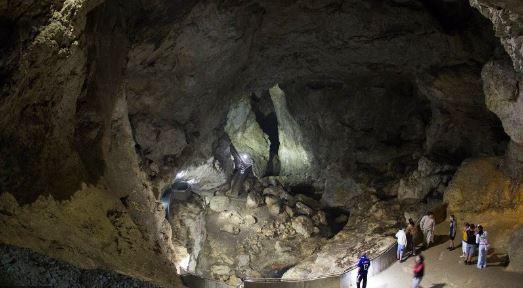
The Devil’s Throat Cave is a natural place in Bulgaria. It is hidden within the winding Trigrad Gorge in southwestern Bulgaria, and has the highest waterfall (42m) on the Balkan Peninsula. Visitors enter an enormous chamber, or Hall of Thunder, after walking through an artificial corridor, so named because of the deafening boom from the waterfall inside the cave.
Folklore holds that it is the ‘throat’ entrance to the Underworld, through which Orpheus descended to save his beloved Eurydice. The abundance of water is said to have come from seven days of Orpheus’ tears, and locals still believe these waters have healing powers.
It is over 300,000 years old and home to the largest colony of long-winded bats in Bulgarian nature. A long, steep staircase along the waterfall’s side will lead you back into the gorge.
Tsarevets fortress (places in Bulgaria)

Veliko Tarnovo was declared the capital of Bulgaria nearly 1,000 years ago, shortly after the country regained its independence from the Byzantine Empire. The Assen dynasty’s tsars (kings) built a spectacular capital with fortresses and churches. They exist on the top of the two significant hills (Tsarevets and Trapezitsa). Tsarevets will enchant you whether you visit during the day or at night. When it hosts a sound and light show telling stories from Bulgaria’s past.
The sinuous curves of the Arda River
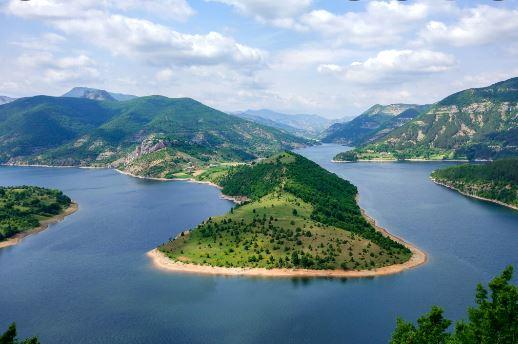
The Arda is the largest river in the Rhodope Mountains and one of the best natural places in Bulgaria. Hundreds of professional and amateur photographers flock to its meanders annually. They capture breathtaking sunsets and sunrises from the nearby hills. In addition, it’s ideal for sunbathing, kayaking, and birdwatching because wild vultures live nearby.
Sozopol (places in Bulgaria)
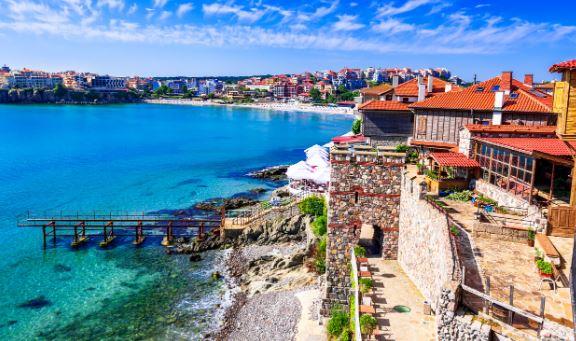
Sozopol, an ancient coastal town, is known for its charming cobblestone streets. It has beautiful beaches and fresh seafood. The Apollonia Arts Festival attracts some of the world’s most famous artists and filmmakers in September. The 10-day arts-and-music festival includes 70 events, including plays, open-air film screenings, and jazz music concerts.
Sozopol is approximately 43.5 kilometers southeast of Burgas Airport. A public bus from Burgas Central Station to Sozopol costs about £3 and takes 30 minutes. It’s one of the best places to visit in Bulgaria.
Beglik Tash (Landmarks of Bulgaria)
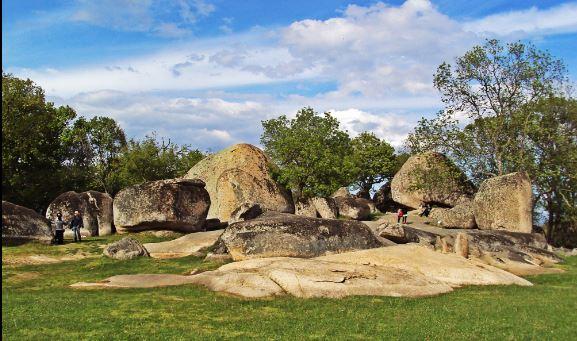
These massive monoliths were previously unknown to the public, having been sectioned off by a former communist head of state who used the land as a hunting ground. Its historical significance, however, dates back to the Bronze Age. Although, it has yet to be officially recognised as a Thracian Sanctuary and Observatory.
Beglik Tash is a collection of rocks of various sizes and shapes. It is located in an oak forest near the Black Sea city of Primorsko. Despite the sheer size and weight of the volcanic rocks, they are said to have the appearance of being purposefully arranged.
